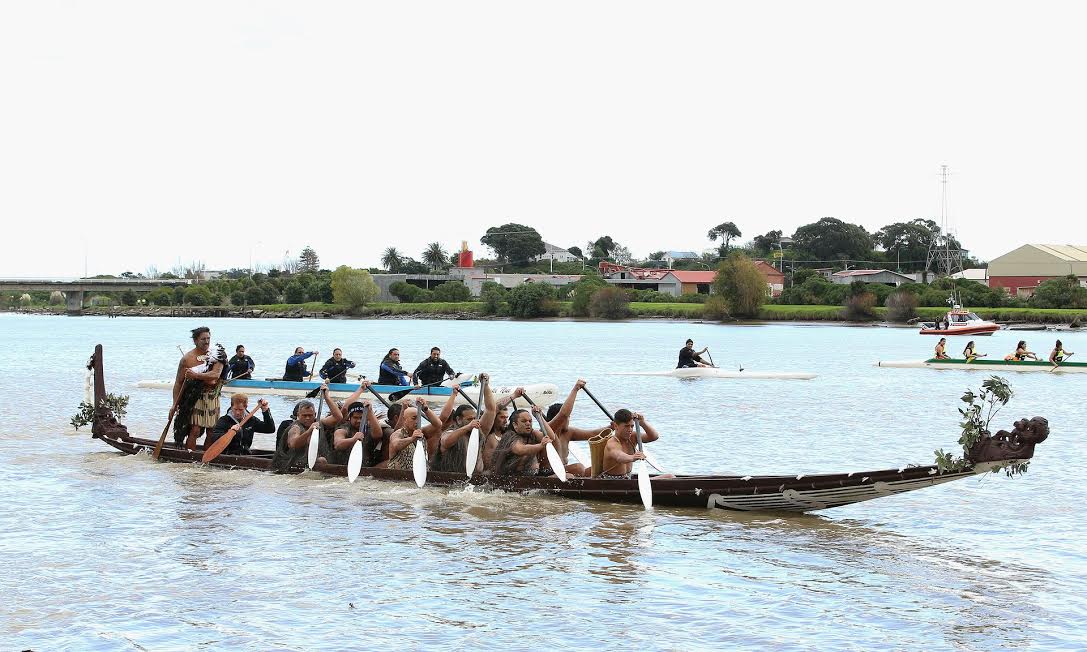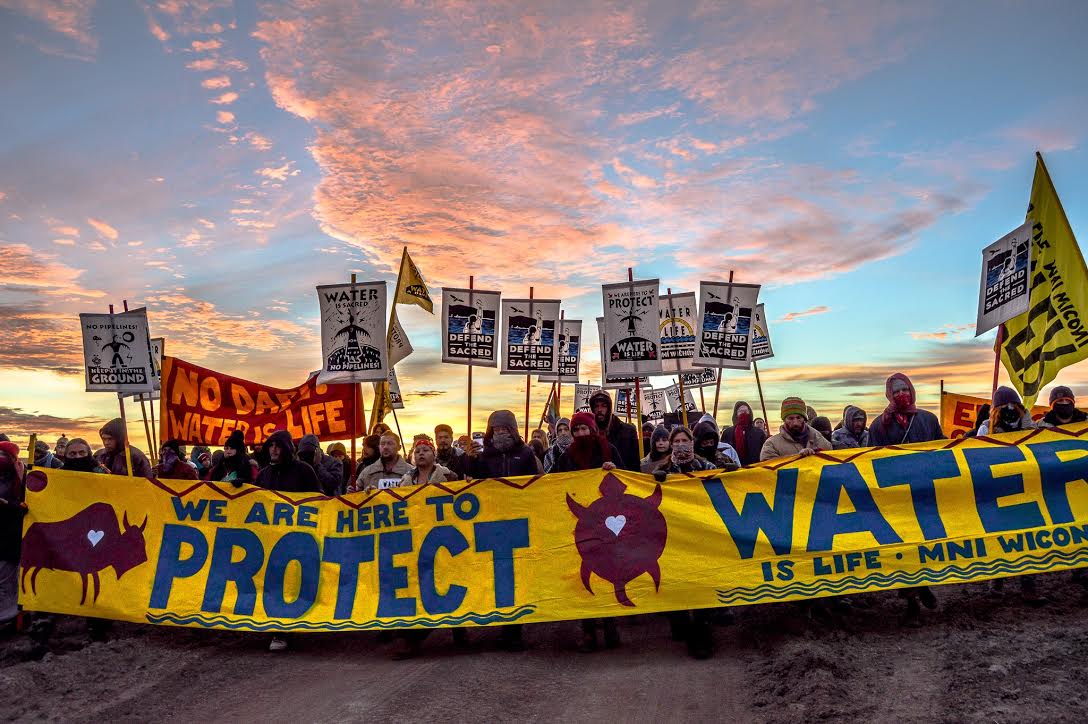Reflections on Various Cases of the Legal Rights of Nature
June 17, 2017
Martin Premoli
In 2016, the indigenous Maori tribe of New Zealand achieved a ground breaking victory when their sacred river—the Whanganui —was granted the same legal rights as a human being. Since then, several countries across the world have experienced similar legal and ecological victories by successfully extending anthropocentric legal protections to beings of historical, cultural, and political significance. In India, for example, both the Ganges and the Yamuna rivers are now considered as possessing the same legal rights as an Indian subject. The decisions reached by these policy-makers not only operate to acknowledge and attend to Indigenous claims of political and epistemological sovereignty, but they also seek to curtail the continued pollution, exploitation, and slow-violence suffered by these dynamic and ecologically complex life-systems.

Environmentally-attuned scholars and activists, such as Joni Adamson and Marisol de la Cadena, have discussed the ways in which legal precedents such as these have helped create the space for “cosmopolitical projects” to emerge. Cosmopolitical projects, in Adamson’s words, help to foreground “not just multicultural (human) worlds that imply a unity of nature and a multiplicity of cultures, but also multinatural worlds that imply corporeal diversity and its attendant diversity of perspectives” (229). From this angle, they enable us to think across deeper scales of time and space, into world-views that typically extend beyond an anthropocentric framework.
These two international examples of cosmopolitical projects frame the recent crisis at Standing Rock by demonstrating how pressing and germane these issues are to our own political and legal circumstances. Despite efforts to argue for the protection of sacred landscapes within the Sioux reservation, Native American activists and allied protestors are still locked into battle with a structure of imperial domination meant to perpetuate the exploitation of natural resources within the space of Native reservations. In addition to keeping in mind how North America’s past is inextricably bound up in violent histories of indigenous land dispossession and oppressive state control, I’d like to suggest that it is also important to consider how the United States’ current legal system is structured to occlude the temporally and geographically deep registers required for perceiving the cosmopolitical significance of non-human entities, such as rivers and mountains.

Legal scholar Alan Freeman helpfully unpacks this issue in his article “Legitimizing Racial Discrimination Through Antidiscrimination Law: A Critical Review of the Supreme Court Doctrine”—an article which examines how “perpetrator” and “victim” perspectives function within the legal realm. In his essay, Freeman argues that much of U.S. law is built in response to the “[t]he perpetrator perspective [which] sees racial discrimination not as conditions, but as actions, or series of actions, inflicted on the victim by the perpetrator. The focus is more on what particular perpetrators have done or are doing to some victims than it is on the overall life situation of the victim class”; furthermore, “the perpetrator perspective presupposes a world composed of atomistic individuals whose actions are outside of and apart from the social fabric and without historical continuity” (1054). As indicated by these passages, the perpetrator perspective is largely contingent on the belief that anti-discrimination law in the U.S. is structured by a system of shared values and universalized criteria that ensures the equal protection of the members of minority groups. In operating under the assumption that the established system functions in a neutral and objective capacity, the perpetrator perspective therefore overlooks the “historical continuities” that have functioned as the conditions of possibility for the emergence of U.S. anti-discrimination law.
We see a similar logic at play in various environmental policies set forth by the U.S. government. The Clean Air Act, the Clean Water Act, and the Endangered Species Act (three of the nation’s most significant statues relating to environmental legislation) all function in the capacity of remediation, conservation, and regulation. From such a perspective, U.S. environmental policy largely works to maintain the present balance of U.S. ecology and biodiversity and to control the country’s natural resources. In doing so, these laws do not question the histories of imperial violence, racism, colonial dispossession, capitalist consumption, militarism, nationalism, and anthropocentrism by which they are shaped; nevertheless, those who violate these policies may be prosecuted by the seemingly objective systems of environmental legislature. Literary critic Ursula Heise provides an example of this issue in her analysis of how the “discourse about endangered species” during the formation of the Endangered Species Act was largely tied to a “particular set of species that is associated with the national character” of the United States, such as the bald eagle or the grizzly bear (94). According to Heise, these animals were placed under the protection of the EPA because of their cultural significance as symbols for U.S. imperial power, not because they were more at risk than other animals. The logic of this policy, however, works to obscure the nationalist motivations that structure it by legally punishing those who violate its ostensibly objective principles.
Instead, Freeman argues for the necessity of taking into account the victim’s perspective, which he describes as follows: “The victim, or ‘condition,’ conception of racial discrimination suggests that the problem will not be solved until the conditions associated with it have been eliminated”; it is “concerned with conditions and results rather than merely with the elimination of offensive practices” (1053, 1090). While such a perspective has not yet been articulated with U.S. legal systems, as I’ve indicated above, several nations across the globe are taking steps toward realizing such a conception. To elaborate on this point, I’d like to briefly turn to Bolivia’s new constitution (issued in 2009)—a political project that has attracted a good deal of attention from environmentalists worldwide and which resonates strongly with Freeman’s articulation of the victim or condition perspective.
The Bolivian constitution, which was followed in 2010 by the passage of the Law of the Rights of Mother Earth, defines its understanding of “Mother Earth” as a legal subject, and outlines the state’s and society’s obligations towards it. Mother Earth is, the law specifies in article 3, “the dynamic living system made up of the indivisible community of all life systems and living beings, interrelated, interdependent, and complementary, which share a common destiny. Mother Earth is considered sacred from the perspective of the cosmologies of original indigenous peasant nations and peoples” (Law 71 2010, art. 3). This enshrinement of nature as sacred in national law guarantees that Mother Earth and her components, including all human communities, are holders of all the historically informed rights established in this law (Heise). Furthermore, Bolivia’s new constitution, interwoven as it is with indigenous cosmologies and world-views, takes into account a wider array of (human and non-human) perspectives and a deeper understanding of temporality, one which extends both into the past and the future.

Unlike much of U.S. environmental policy, with its tendency for control and remediation, the Bolivian law articulates a commitment to cultural diversity and social justice (as opposed to the atomistic or ahistorical perspective of contemporary U.S. legislation) through its respect for the different epistemologies that the country’s varied cultural communities bring to bear on human and nonhuman life. In suggesting that the conditions of a nation’s ecology are shifting, diverse, wide-ranging, and inflected by deep notions of temporality, the Bolivian law continually calls into question the conditions that structure the country’s ecology, economy, and legal systems—much like the way the victim perspective within anti-discrimination law does not overlook the “historical continuities” and “social fabric” that shape and implicate our current legal system.
I would like to conclude by suggesting that within a U.S. context, thinking through a far more historically attuned and socially contextualized imagining of environmental policy (in line with both the Bolivian constitution and the victim-perspective) would allow for our nation’s “unimagined communities”—communities that have been physically and imaginatively displaced from a nation’s borders (in the words of scholar Rob Nixon)—to re-enter and re-shape the structure of our nation’s legal and social frameworks.
---
Martin Premoli is a third year Ph.D. candidate in Comparative Literature. His studies are centered on contemporary American literature and literature of the global south. Questions of empire, indigeneity, and environmentalism engage him as a scholar.
Work Cited:
Adamson, Joni. American Literary History: Indigenous Literatures, Multinaturalism, and Avatar: The Emergence of Indigenous Cosmopolitics. 24 Vol. Oxford University Press, 2012. Web. 15 June 2017.
Freeman, Alan D. “Legitimizing Racial Discrimination Through Antidiscrimination Law: A Critical Review of the Supreme Court Doctrine” Minnesota Law Review (1978): 1049-1119.
Heise, Ursula K. Imagining Extinction: The Cultural Meanings of Endangered Species. Chicago: U of Chicago, 2016. Print.
Nixon, Rob. Slow Violence and the Environmentalism of the Poor. Cambridge: Harvard University Press, 2011.
